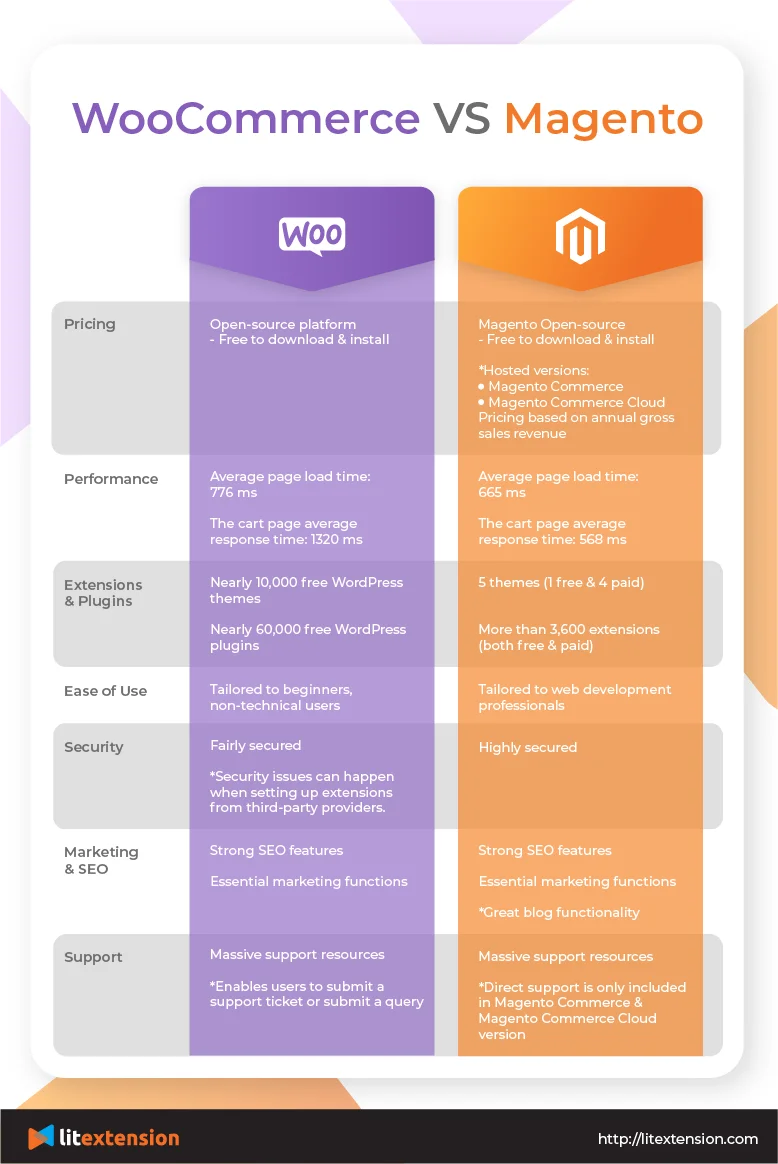WooCommerce vs Magento – both platforms have been gaining in popularity because each one constantly puts great effort into developing their products to serve customers. However, they are not for everyone. It is on you to choose the best platform to start considering different factors.
In this article, LitExtension – #1 Shopping Cart Migration Expert would like to take you through a comprehensive comparison between WooCommerce vs Magento so that you can find the better one to build your online business:
- A quick look at WooCommerce and Magento;
- The difference between WooCommerce vs Magento;
- What should you go for – WooCommerce or Magento?
Seamlessly Migrate Your Store to Another Platform
Our team of experts can safely transfer your business data, products, customers, and orders to unlock more growth in another eCommerce platform. Let us provide a customized migration for you!
WooCommerce vs Magento – Overview
In terms of eCommerce solution usage, WooCommerce holds the second-largest share in the open-source category, accounting for over 8%, whereas Magento holds the ninth position with 0.33% (source: BuiltWith). In general, these two platforms are among the top popular websites.
1. What is Magento?
Magento has constantly acquired a high reputation so far. It came into existence on 31st August 2007 and has released multiple versions and product updates. According to BuiltWith, there are over 130,000 live websites using Magento.
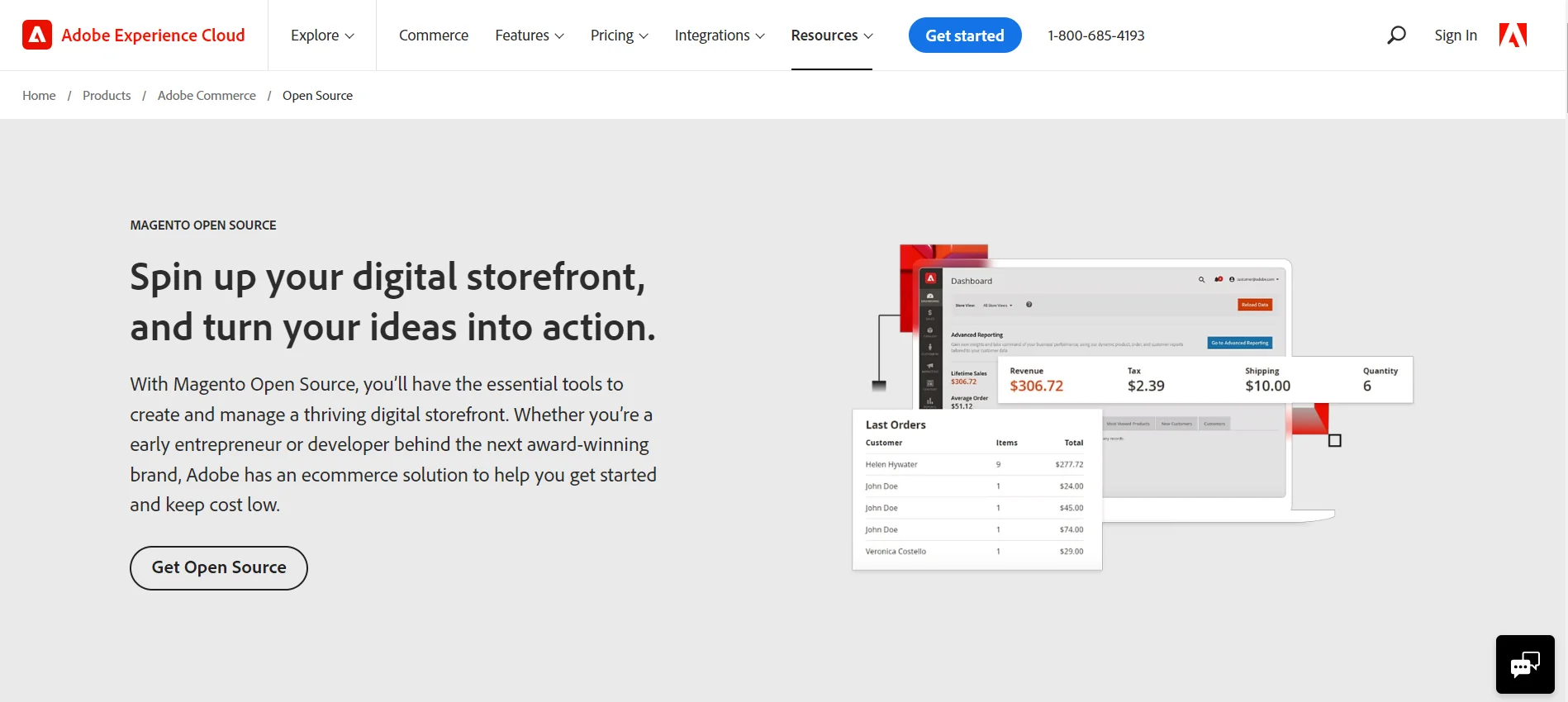
Built for developing an effective business, Magento comes with a wide range of strong points. These include out-of-box functionalities, customization ability, and seamless third-party integrations like Magento Shipping Services by PluginHive.
2. What is WooCommerce?
Among top Magento alternatives, WooCommerce is a powerful eCommerce plugin on WordPress. Launched in 2011, WooCommerce has been continuously making progress. Currently, this platform is hosting more than 3.5 million websites across the globe (source: BuiltWith).

Although Magento and WooCommerce both aim to provide a dynamic commercial environment, there are significant variations between them. Let’s check out our WooCommerce vs Magento comparison video!
`
WooCommerce vs Magento – Pros and Cons
To gain a better understanding of the Magento WooCommerce comparison, you can’t skip through the pros and cons of both platforms.
[wptb id=62950]
WooCommerce vs Magento – Detailed Comparison
Now, let’s go deep into the detailed comparison of WooCommerce vs Magento, including their performance, extensions, security, ease of use, marketing, pricing, and more.
1. Pricing
Cost is one of the most influential factors in decision-making. Especially with online shopping carts, you need to evaluate all costs contributing to an effective operational website. Otherwise, these costs might be beyond the limit and initial investment.
Quick verdict: WooCommerce prices are more affordable. However, its functionalities could not help to handle the increasing number of customers as well as scale up the business. On the other hand, Magento offers more effective features and pricing choices.
WooCommerce Pricing
In April 2023, WooCommerce announced the hosted version, Woo Express, which starts from $39/month. However, within the scope of this WooCommerce vs Magento, we will only talk about the open-source version of WooCommerce.
Although WooCommerce itself is free, you still have to pay for a domain name, web hosting, and SSL certificate (from $9/month). Also, theme and website design usually range from $50 to $100, and plugins & extensions are from $25.
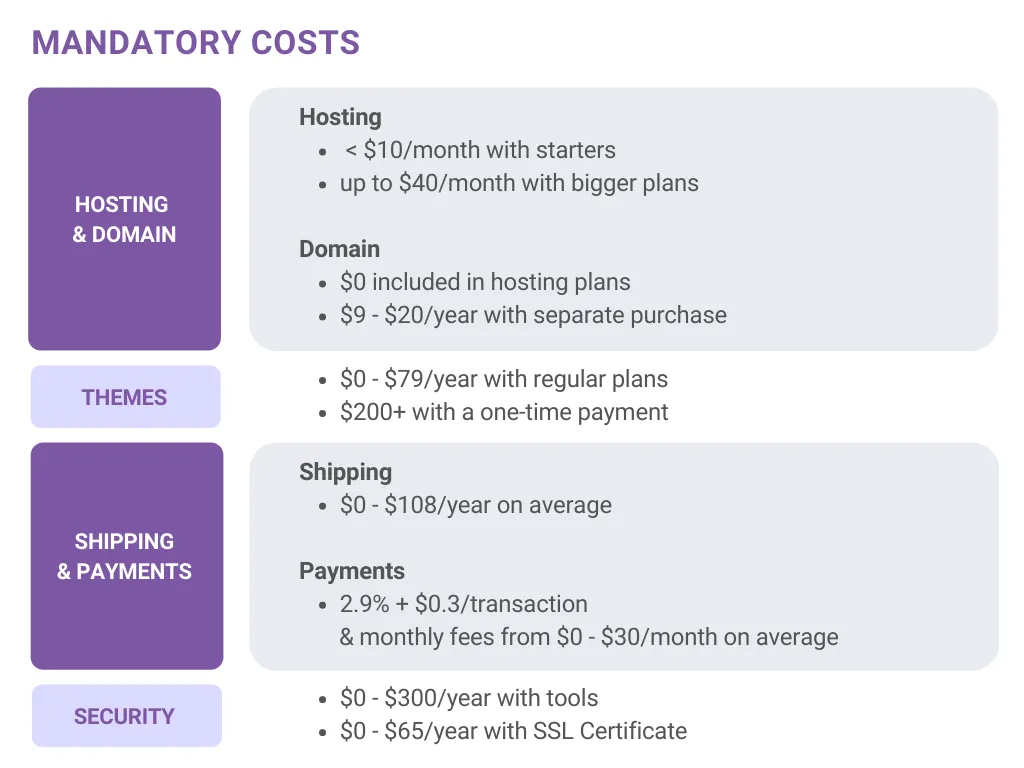
The overall cost of WooCommerce can not be projected exactly because it depends on the number of necessary features that you purchase. Choosing essential features and free services is the ideal choice for low-budget businesses.
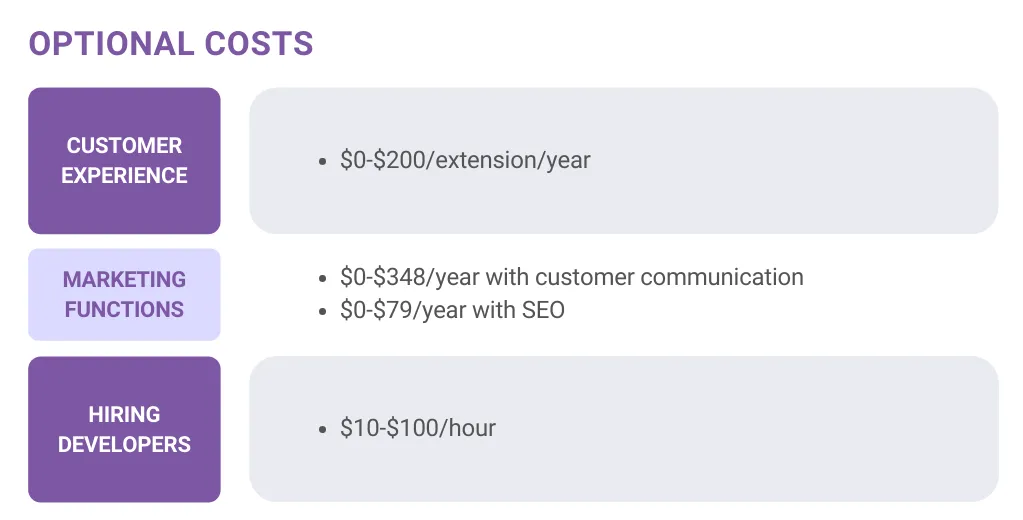
Magento Pricing
Currently, there are two available pricing editions on the Magento eCommerce platform:
- Magento Open Source (free platform – includes basic functions only).
- Magento Adobe Commerce (a premium paid edition of Magento – provides rich, additional features to serve large-scale and complex businesses).
With Magento Open Source edition, you can easily download and install without paying. Though, you still have to pay money for hosting services (starting from $10). The cost will be even much higher when you purchase several necessary items to get your store working perfectly. You may confront paid extensions (from $50 to $500), themes (from $0 to $200), domains (from $10 to $500), and hosting (from $10).
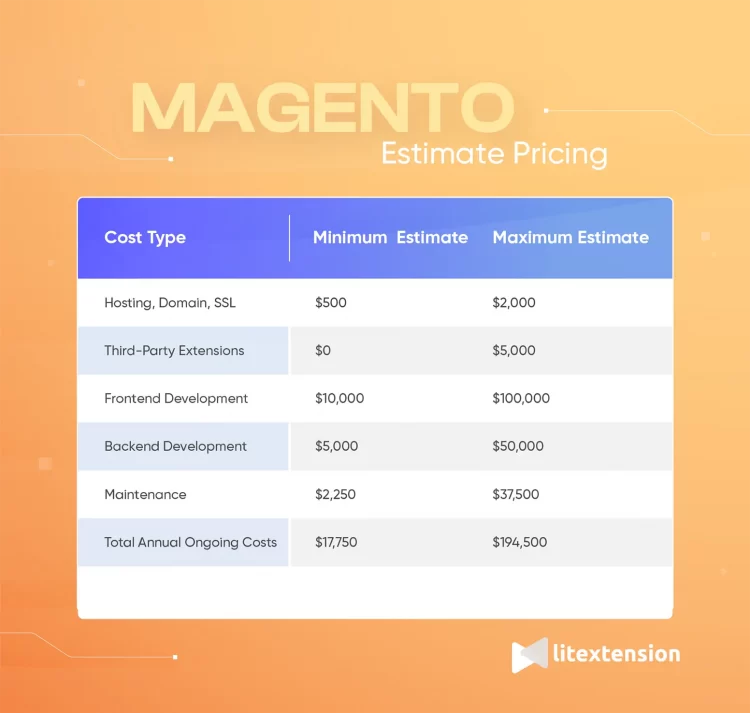
For advanced features, you can consider choosing one out of two pricing packages for the Magento Adobe Commerce version: Adobe Commerce Pro and Managed Services. The main difference between the two packages is that Adobe Commerce Managed Services expands your possibilities with expert-like tools, such as Designated cloud infrastructure resources, Planned event management support, and so on.
Seamlessly Migrate Your Store to WooCommerce
Our team of experts can safely transfer your business data, products, customers, and orders to unlock more growth in another eCommerce platform. Let us provide a customized migration for you!
2. Performance
When it comes to the performance of a website, loading time and availability are of great importance since they will either make or break your business. Sluggish loading times, as well as the “can’t reach” status, will definitely give an unpleasant experience to customers.
The longer the loading speed is, the more likely customers will leave your website and move to other competitors. Hence, it will considerably shorten the average on-page time of your website and have a negative impact on your website’s SEO ranking.
Quick verdict: In WooCommerce vs Magento, the possibility of accessing is rather satisfying in both. Regarding the pace, Magento has a better loading speed in comparison with WooCommerce. This is one of the few reasons explaining why Magento is better than WooCommerce to some extent.
WooCommerce Performance
To measure speed and availability, we conducted the test on the back end, meaning the time that CMS takes to generate the HTML code and send it back to the browser. This work is applied to each page of each website, from the home page to the cart.
Although WooCommerce also possesses pretty high availability like Magento, its response time is slow actually. The average page load time of all sites is 776 milliseconds, especially the cart page, which takes 1.32 seconds to reach.
Magento Performance
On the other hand, they discovered that Magento is fairly stable, with an average availability rate of up to 99.71% despite the high traffic (3000 visitors per day). However, the speed is not as fast as we expected, with an average page load time of 665 milliseconds with high availability. This is not a fast pace, but it does not discourage users as well.
Magento developers always expect to improve Magento performance and they make extensive use of caching of page content and static assets on the server to accelerate response times in Magento 2.0 and over. Thus, the page load speed has been further improved.
3. Extensions & Plugins
Extensions are features integrated into stores to enhance and extend the operation of eCommerce websites. Magento vs WooCommerce, are well-known for a large number of add-ons that enhance the functionality and the appearance of the website.
Quick verdict: WooCommerce vs Magento, both these eCommerce solutions have come up with a host of extension choices to boost sales and grow your business. Among those thousand choices, make sure that you install the ones that you need the most, which helps to save your store’s capacity and does not affect its performance.
WooCommerce Plugins
WooCommerce itself arms users with hundreds of WooCommerce extensions, both free and premium, covering all of your logistical, technological, and marketing needs.
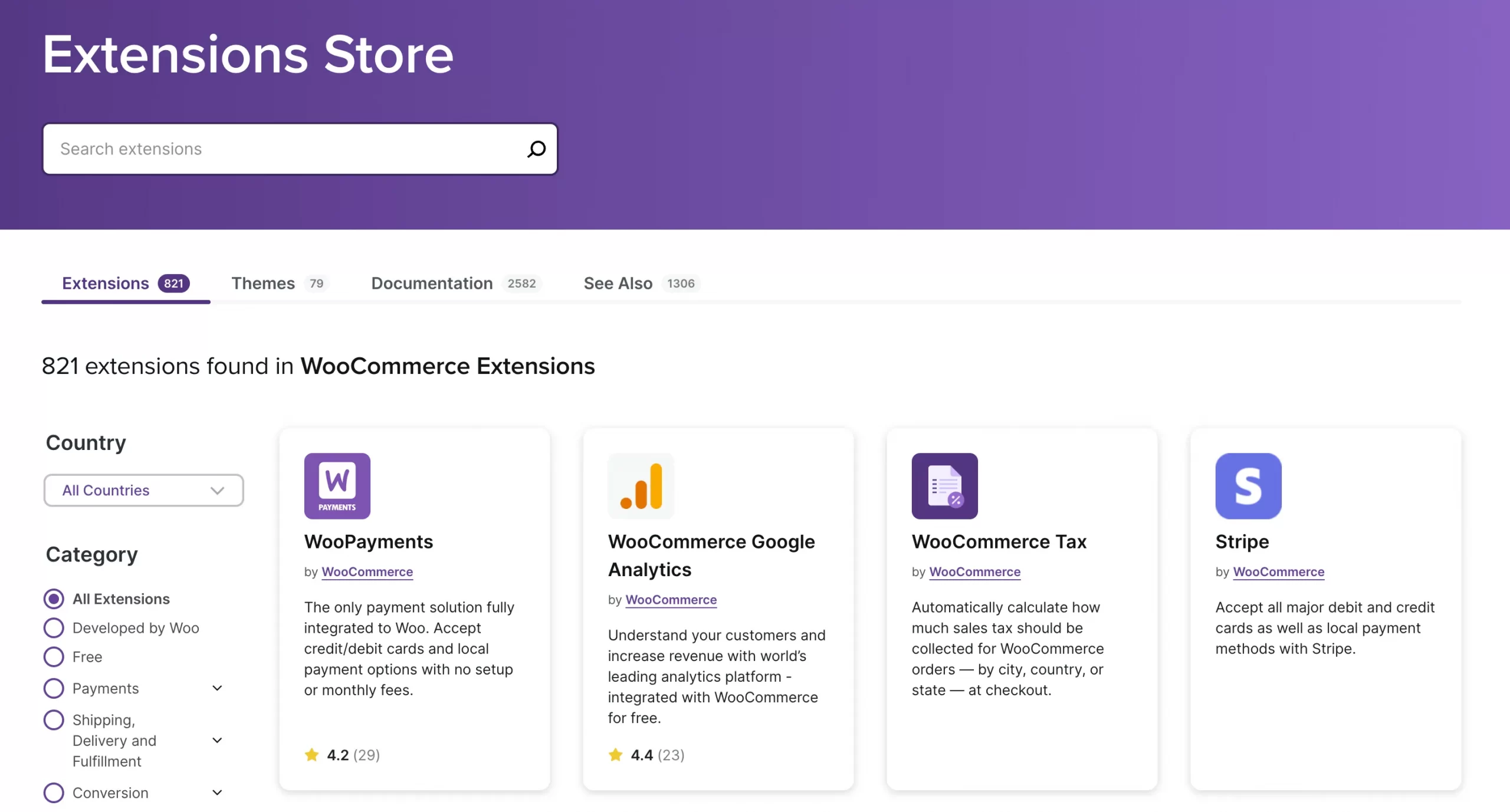
What’s more? Running on top of WordPress, WooCommerce gives you access to more than 60,000 free WordPress plugins and themes. You can customize your eCommerce store in terms of product type, store management, marketing, payments, shipping, enhancement, and subscription. Plus, it is easy to integrate them into WooCommerce stores.
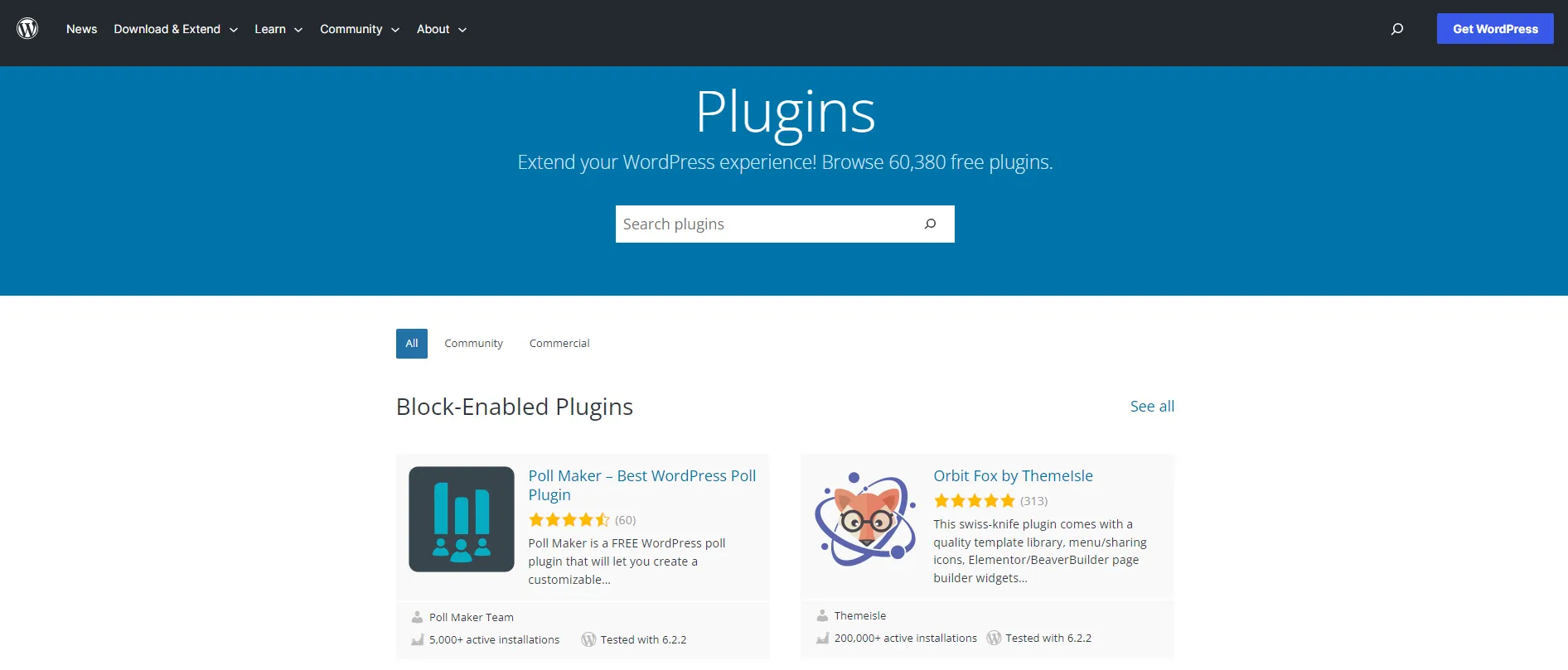
We collected 10+ best WooCommerce plugins that definitely equip your online store. If you are struggling with which one to start with, our list might be helpful!
Magento Extensions
Similarly, Magento goes with a vast variety of paid and unpaid third-party extensions because Magento has a vibrant community of developers, agencies, and freelancers.
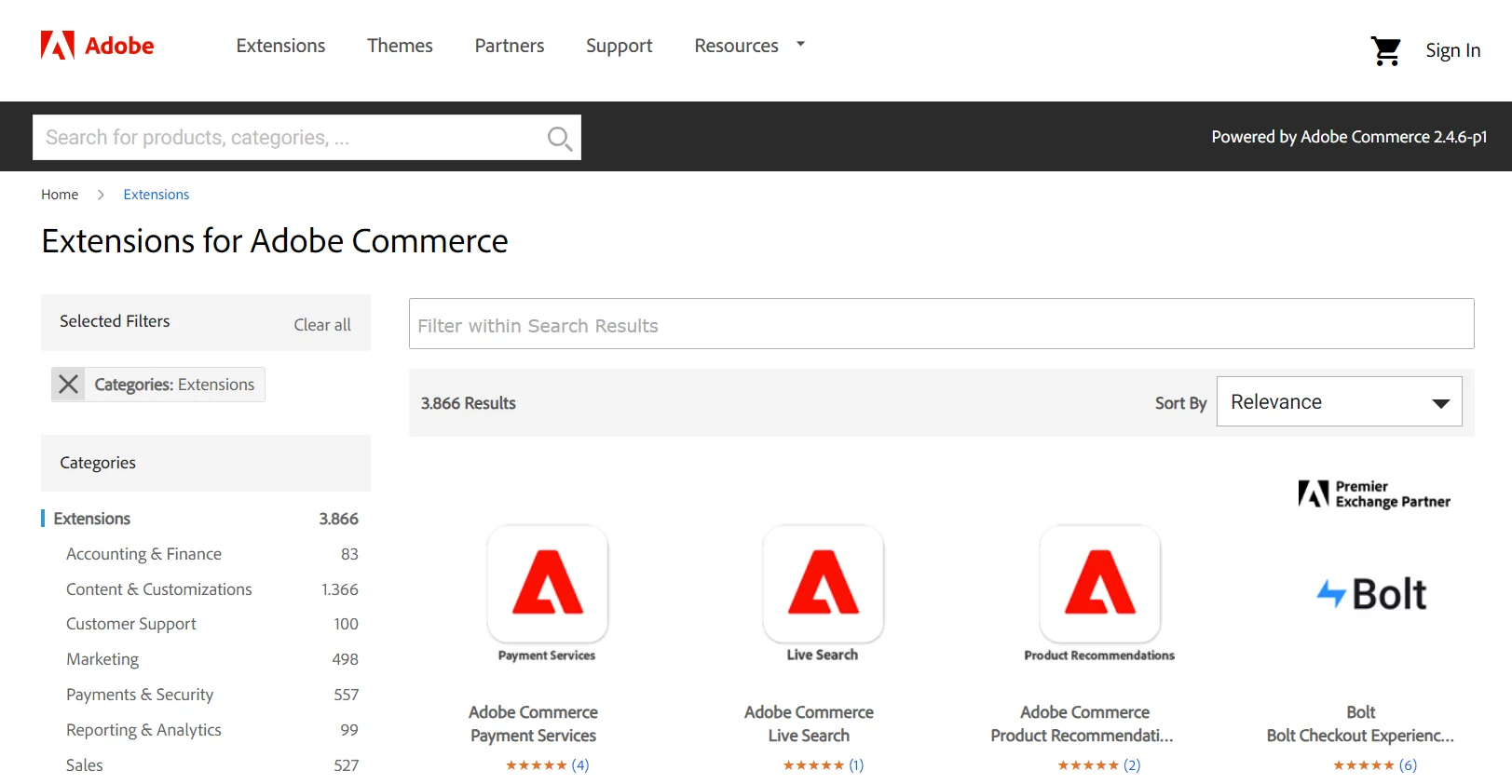
At present, Magento Marketplace has over 4000 extensions for various factors such as accounting & finance, marketing, sales, payment & security, reporting & analytics, and customer support. Here are the 7 best Magento extensions to explode sales; check it out!
4. Scalability
In the long run, our final aim is to generate higher profits. Eventually, every online business will need to offer a larger number of products and handle multiple customers at once. As a result, the website itself will need to be upgraded to adapt to our needs to guarantee the most fulfilling customer experience.
When putting WooCommerce vs Magento on the scale of scalability, there are some noteworthy differences you need to highlight before making the final decision.
Quick verdict: For eCommerce store scalability, Magento seems to be a better choice. If you consider scaling up your business with more products and customers to handle, why don’t you move your store to Magento? Follow our guidelines to move from WooCommerce to Magento in 3 simple steps.
Scalability of WooCommerce
WooCommerce claims that there is no limit to how many products a company can handle online. However, when compared to Magento, WooCommerce may require more installations at once to be compatible with business expansion. This is because WordPress itself might run into problems if your website has to process thousands of orders simultaneously.
Scalability of Magento
Magento is positioned as a CMS for online stores with great ambitions, hence scalability is a key feature.
Magento is definitely for you if you have a firm that sells more than 1000 products. Designed with scalability in mind, Magento can handle large product catalogs, high traffic, and multiple stores on a single backend. Keep in mind that the cost will vary based on how you want to construct your Magento website, and the process can be pretty hard at times.
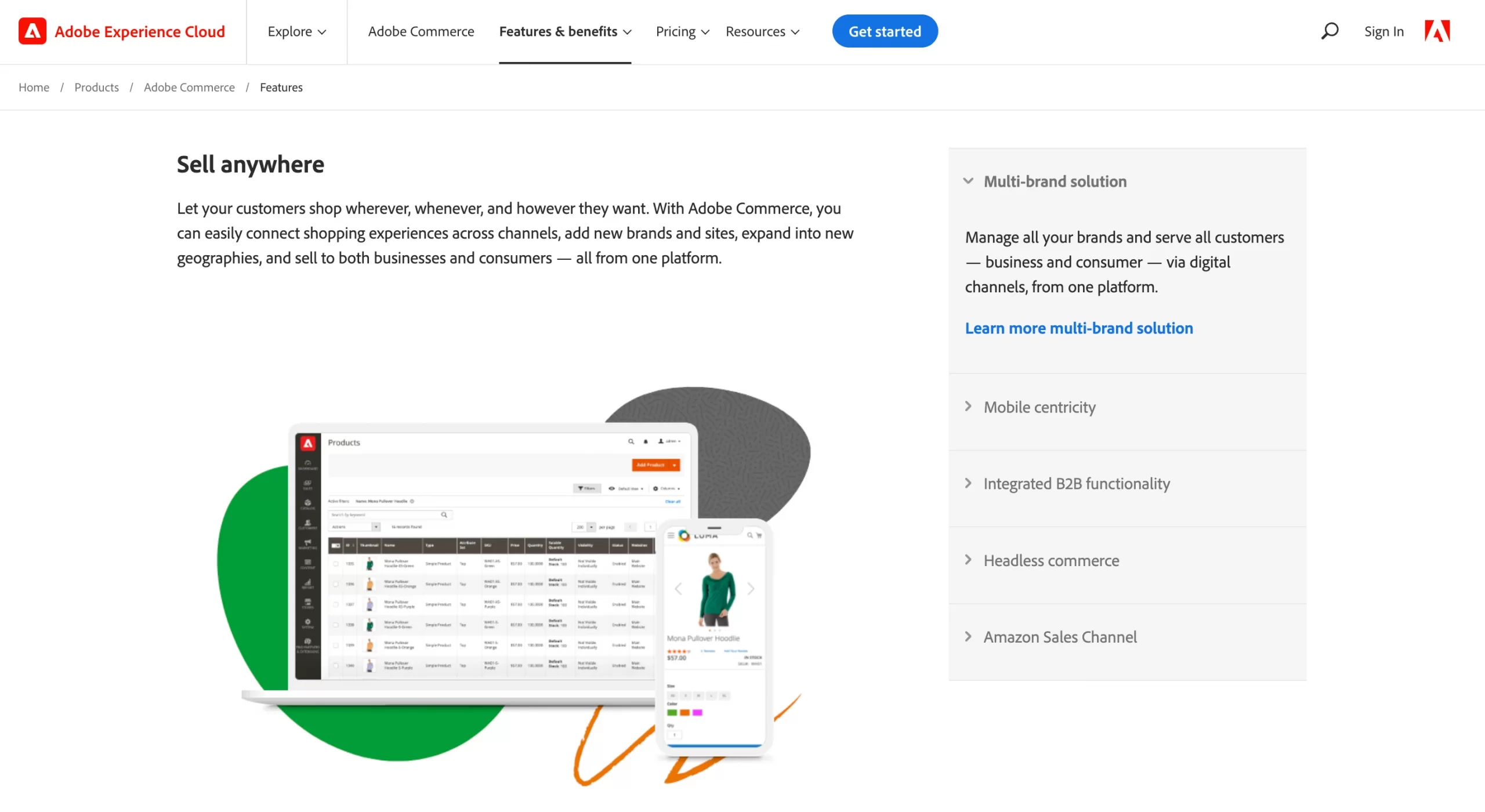
A new eCommerce decade comes with a multi-channel selling solution that can help you broaden your business through various sales channels. You are able to connect to thousands of potential customers on the top global marketplaces like Amazon, eBay, or Etsy. With the need for WooCommerce Amazon Integration, and many more, the process of managing every data can be well-handled on a single dashboard. Why not give it a try?
5. Ease of Use
Next up, we have the ease of use of WooCommerce vs Magento. It is essential to go for a simple interface and straightforward tools when choosing an eCommerce platform. In this way, e-merchants can streamline operations, minimize training time, and put more energy into expanding their business and increasing productivity.
Quick verdict: WooCommerce vs Magento, it is no doubt that WooCommerce is much more friendly-users than Magento. However, Magento works well with large-scale businesses. It is advisable that users choose the solution based on their store scale and technical skills.
WooCommerce Ease of Use
This platform is targeted to beginners with little eCommerce experience users, so WooCommerce developers always try to make it as beginner-friendly as possible for their users. Receiving 4.5/5 stars of satisfaction on Capterra, almost all WooCommerce users have stated that this website is rather easy to use, especially when they interact with the interface.
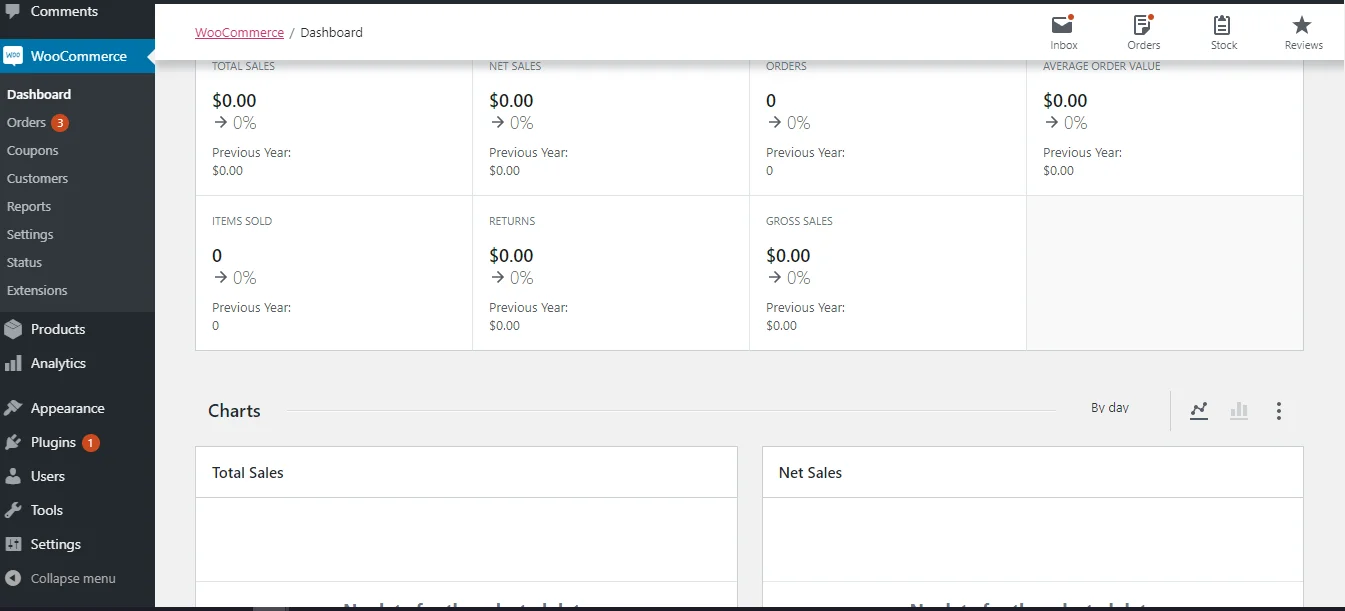
In a WooCommerce’s ease of use review, Mrs. Umair B, an Information Technology and Services said that:
WooCommerce gives full features like you can see the order details in the WordPress dashboard, customer details, and everything. According to my eCommerce experience, wooCommerce is the easiest and professional plugin to design an eCommerce website.
The platform is highly customizable with your WP-Admin dashboard. You can easily personalize your website with theme options allowing you to change the color of your design, add different functions to your shop and insert pictures or videos.
To make it easier for users, WooCommerce comes with a setup wizard that will walk you through the initial setup, like creating pages, setting up payments, choosing the currency, and setting shipping and tax options. This platform offers plenty of help to do almost anything. Setting up and running a new store from scratch without having any experience in eCommerce stores will become much easier with this WooCommerce development service.
Magento Ease of Use
In contrast, Magento is tailored to web development professionals, and medium to large online stores. It requires users to have at least basic technical knowledge to use. Hence, amateur users may find it difficult. When we need some Magento modifications, we normally need a developer with high-tech skills.

The Magento store set-up process can be complicated for new users even if there are multiple setting guidelines and tutorials provided (most are written for developers and not for DIY users). After the installation, you still have to spend time finding ways to set up extensions and customize themes since it is not simple.
It was the first time my team used Magento, and spent sleepless nights trying to understand how it works, and how to customize it. This was very stressful, and was the reason for which my team dumped it.
Seamlessly Migrate Your Store to Magento
Our team of experts can safely transfer your business data, products, customers, and orders to unlock more growth in another eCommerce platform. Let us provide a customized migration for you!
6. Security
You should prioritize your website away from security risks. This performs through its ability to protect your website as well as your customer information from the exploitation of cyberattacks. If that is the case, these risks will ruin your website’s reputation and discourage visitors from coming back. In contrast, if your website is highly secured, you will retain your long-built reputation and your customers as well.
Quick verdict: To summarise, Magento and WooCommerce meet the security standard. However, they both could be vulnerable externally. In this case, Magento seems to be more secure with its qualified security extensions.
WooCommerce Security
WooCommerce remains rather secure itself as well as there are no marked security issues in WordPress. The core of this system has gone a long way in development, so it’s quite safe. According to BetterStudio‘s report on WordPress Security, there are around 4.7 million WordPress websites are hacked per year, which accounts for 4.3% of the total website number. The problems may happen only when third parties are involved in setting up extensions.
Magento Security
Meanwhile, Magento itself has the functionality to get its stores highly secured. Magento offers online store owners stronger security with dedicated security patches released frequently.
In addition, many built-in security measures are accessible to help protect Magento installations and management. Specifically, these measures could enhance password management, improve the prevention of cross-site scripting attacks and clickjacking exploits, and adopt more flexible file system ownership & permissions.
7. Marketing & SEO
Without marketing, businesses can not reach their potential customers, boost sales and grow their brand. For online businesses, SEO and content is the primary marketing strategy. Therefore, when considering a platform to build your store, you should also look at how it can facilitate SEO and blogs.
Quick verdict: When it comes to WooCommerce vs Magento marketing, users can bring their products and services to the customers effectively with their essential marketing features. Both WooCommerce and Magento are packed with an equal amount of SEO and marketing features. We gave them the same point for this section.
WooCommerce SEO & Marketing
As a plugin based on WordPress, WooCommerce inherits all innovative writing blog functions, thus supporting its eCommerce content marketing campaigns. In other words, there is no need to incorporate the writing blog function to get your content and ideas to come to visitors because you already have an ultimate one. Moreover, by utilizing shortcodes, you can insert any extra elements into your landing pages and blog sites easily.

Magento SEO & Marketing
Magento is equipped with a powerful SEO toolset built into the core platform which would help to promote your search engine rankings. In addition, Magento creates a Marketing Menu for managing promotions, communications, user-generated SEO, and content.
However, you should take into account that blog functionality is not available in Magento default, and you need to use a custom blog extension for it. In addition, you can also look for assistance from Magento SEO Agencies. To improve your SEO results, explore more of our awesome tips and tricks.
8. Payments & Shipping Methods
The payment and shipping phase is where your customers directly associate with the brand and give their assessment of the entire experience. Therefore, if you fail to set it up effectively, then you will need to work extra hard to hold your customers back.
Quick verdict: Both WooCommerce and Magento provide extensive options for payments and shipping methods, catering to a broad spectrum of businesses. WooCommerce’s advantage lies in its user-friendly interface and ease of integration with popular payment gateways and shipping carriers. On the other hand, Magento’s strength lies in its ability to handle more complex payment and shipping setups.
WooCommerce Payments & Shipping Methods
The great thing about WooCommerce is that it provides a wide range of payment gateway options, including PayPal, Stripe, Square, and many others. Additionally, users can also integrate with regional and international payment processors by setting up third-party extensions. Not to mention, the numerous amount of plugins are waiting for you in the WordPress Plugin Directory, too.
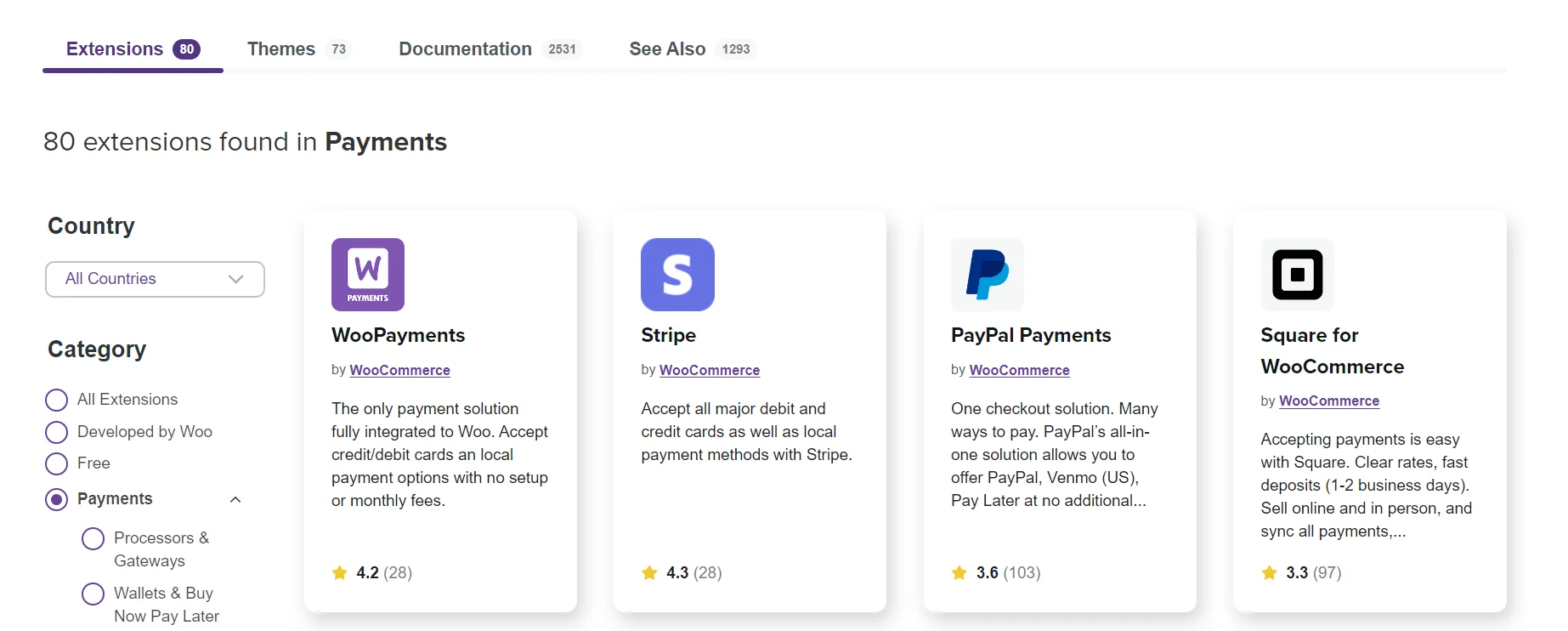
This works the same for WooCommerce shipping methods. Besides configuring flat shipping rates, free delivery, and in-store pickup, you can work with the biggest names in the industry, such as UPS, FedEx, and USPS, etc. to keep your customers delighted.
Magento Payments & Shipping Methods
For a while, Magento has had a strong reputation for handling complex payment integrations effectively. You can decide to integrate with PayPal, Braintree, and more out-of-the-box options.
Also, its robust shipping capabilities also surprised us. Magento offers advanced shipping features and supports various shipping methods, including flat rates, table rates, and real-time carrier calculations. This way, businesses with large and diverse product catalogs, multiple warehouses, and complex shipping rules can gain quite plentiful benefits.
9. Support
eCommerce systems often include a variety of customer support tools to aid retailers in providing first-rate service and making online purchases a pleasant and satisfying experience for their customers. Effective customer service is crucial to the success of any online business because it increases the likelihood that customers will return and tell their friends about your company.
Quick verdict: Both Magento and WooCommerce open-source platforms give them the advantage of attracting a large user base and community. Moreover, these platforms all have a huge community from around the world to support store owners if they run into any problems.
WooCommerce Support
Being a part of the WordPress ecosystem, WooCommerce benefits from a large and active user community. The WooCommerce community consists of developers, designers, store owners, and enthusiasts who contribute to the platform’s growth and success.

Apart from that, you can gain more information by referring to WooCommerce’s documentation and blog posts or even contacting WooExperts if technical issues happen. Nevertheless, since it is an open-source platform, WooCommerce users tend not to get as massive support as other eCommerce solutions.
Magento Support
With Magento, the degree of customer support from Magento Open Source and Magento Commerce greatly differs. Merchants using Magento Open Source, like many open-source systems, do not have access to live chat, phone numbers, or email. Users consult and seek help in the Magento forums and communities solely.
In contrast, Magento Commerce users will get official full-fledged support, including email and live support. With the Magento Commerce on Managed Services package, your website will be taken care of by a Customer Success Engineer, to guarantee the best outcome possible.

What’s Unique about WooCommerce vs Magento?
WooCommerce is a powerful plugin for the WordPress platform. It has all of the functionality you’d expect from an eCommerce platform while keeping the simplicity of its parent platform.
Magento is an eCommerce platform specifically for web developers and medium to big online retailers. It has one of the most comprehensive feature sets in the industry, making it perfect for stores with high goals.
WooCommerce vs Magento – Which One Is Better?
WooCommerce vs Magento are both truly worthwhile eCommerce solutions.
Choosing the ultimate solution for your future online store will never be easy since no single platform will fit the needs of every user perfectly. However, you could find the most suitable one that owns the necessary features for your store by taking an overall look at various aspects of each platform.
- While WooCommerce is user-friendly and offers low-cost payments, Magento, at a higher cost, provides users with high security and high performance.
- While the WooCommerce platform is more efficient for small-scale stores, Magento works better with big businesses.
In the end, our decision in the WooCommerce Magento battle is that Magento is ideal for developing a business because it includes all the factors that help you build a successful online store. You cannot foresee how your store will progress, so spending more initially on building up your store is advisable.
WooCommerce vs Magento – FAQs
[sp_easyaccordion id=”48457″]
Conclusion
Hopefully, after reading our WooCommerce vs Magento comparison, you can figure out your dream eCommerce solution. If you already have a store and are expecting to move to Magento or WooCommerce, go with LitExtension – the #1 Shopping Cart Migration Expert. With a few simple steps, you can easily perform migration successfully and accurately.
If you have any questions about your store migration, don’t hesitate to contact us. LitExtension is always eager to help you. Check out our blog and join our Facebook Community to get more eCommerce tips and news.
In case you need further analysis of Magento vs other platforms, don’t forget to check out the Shopware vs Magento comparison we’ve compiled.
